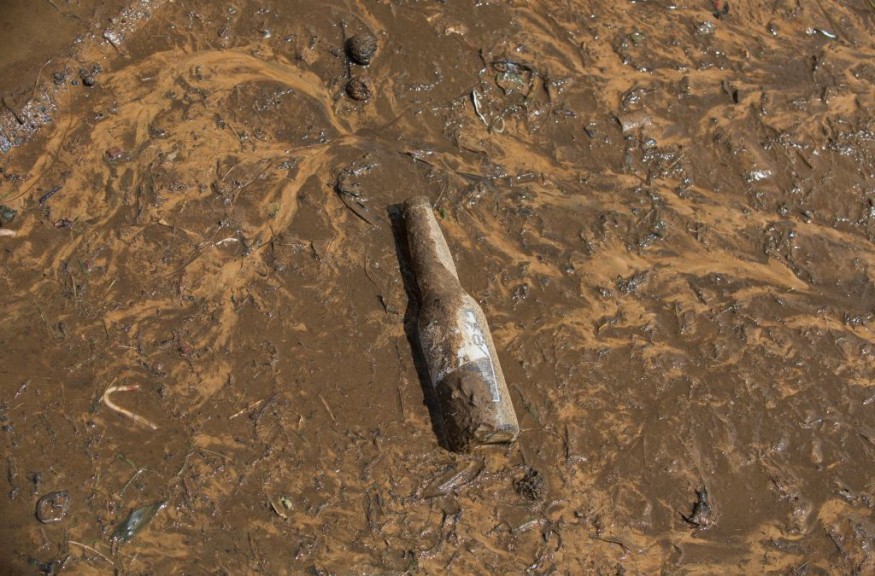Researchers said tropical cyclones, including hurricanes and typhoons, could travel "northward and southward in their respective hemispheres," as the Earth warms due to anthropogenic greenhouse gas emissions, Yale reported.
The subtropical storm Alpha in 2020, the first cyclone observed making landfall in Portugal, and the Hurricane Henri this year, which made landfall in Connecticut, may indicate such storms.
"This represents an important, under-estimated risk of climate change," wrote first author Joshua Studholme, a physicist at the earth and planetary sciences department of Yale University and a contributing author on the Intergovernmental Panel on Climate Change of the United Nations, in the journal Nature Geoscience published earlier this year.
He added that the 21st century's tropical cyclones will occur over a wider range of latitudes than the case on Earth for the last three million years. The expansion of hurricanes and typhoons will affect major cities like New York, Boston, Beijing, and Tokyo.
ALSO READ: Engineers Devise Machines to Remove CO2 from the Air, Could Potentially Stop Climate Change

'Harbinger' of Climate Change
While a rise in tropical cyclones is typically referred to as a "harbinger of climate change," which stays unclear in terms of their sensitivity to the planet's average temperature.
During the 1980s, Kerry Emanuel, the study co-author from the Massachusetts Institute of Technology, used notions from classical thermodynamics to forecast that global warming would lead to stronger storms. This forecast has been verified in the observational data.
Yet, other aspects of the link between tropical cyclones and climate still don't have a physically-based theory. For instance, there is no consensus among scientists about whether the storms' total number will rise or drop as the climate warms or why the Earth experiences approximately 90 such occurrences every year.
According to Alexey Fedorov, an oceanic and atmospheric scientist at Yale explained, "there are large uncertainties" in how tropical changes will change in the future.
He added that multiple lines of evidence specify that there could be more tropical cyclones in mid-latitudes, even if the tropical cyclones' total frequency does not rise, which remains actively argued.
Fedorov also explained, compounded by the expected rise in average tropical cyclone strength, the study findings published in Nature Geoscience infer higher risk because of a tropical cyclone in the warming climate of Earth.
Tropical Cyclones
Tropical cyclones usually form at low latitudes that can access warm waters from tropical oceans and away from the jet streams' trimming effects. Such streams are west-to-east bands of wind circling the planet.
The rotation of Earth leads to thunderstorm clusters aggregating and spinning up to form the vortices, becoming tropical cyclones. Other mechanisms of hurricane formation exist, too.
As the climate warms, differences in temperatures between the poles and the Equator will decline, explained the researchers.
During summer, this may be a reason for weakening, or even a split in the jet stream, opening a window for tropical cyclones to form and strengthen in the mid-latitudes.
Predicting Future Hurricanes
For this research, Studholme and Federov, together with their colleagues, examined numerical replications of warm climates from the distant past of this planet, recent satellite observations, and a variety of weather and climate forecasts, and fundamental physics governing atmospheric convection and planetary-scale winds.
For instance, the researchers noted that replications of warmer climates from 56 to 34 million years ago during the Eocene and 5.3 to 2.6 million years ago during the Pliocene periods saw tropical cyclones form and strengthen at higher latitudes.
Studholme, a Yale postdoctoral fellow said, the core problem when making predictions for future hurricanes is that models utilized for climate predictions do not have adequate resolution to replicate realistic tropical cyclones, as indicated in a Futurity report.
Report about the tropical cyclones to hit major cities, including New York, Boston, Beijing and Tokyo more intensely is shown on TomoNews US's YouTube video below:
RELATED ARTICLE : Recent Deadly Tornadoes Are Different Than Usual in Terms of Duration, Strength; Scientist Explains Why
Check out more news and information on Climate Change in Science Times.
© 2025 ScienceTimes.com All rights reserved. Do not reproduce without permission. The window to the world of Science Times.












